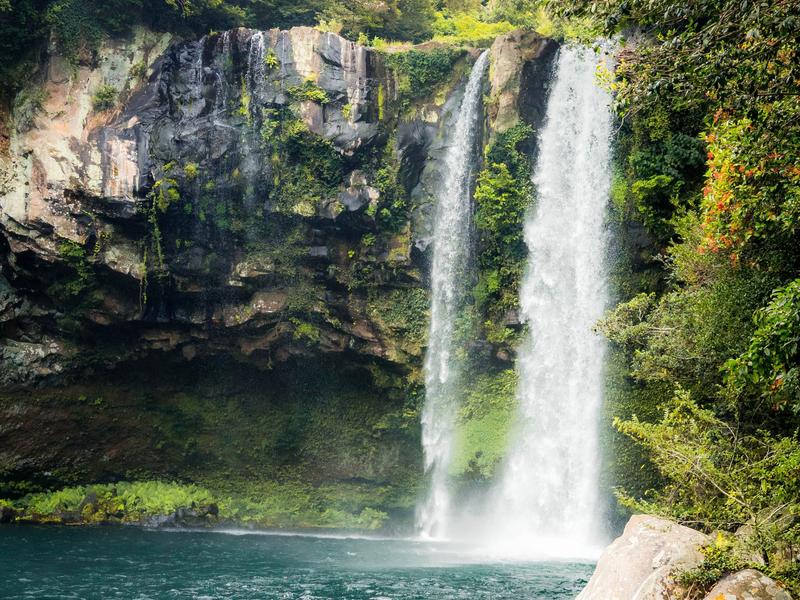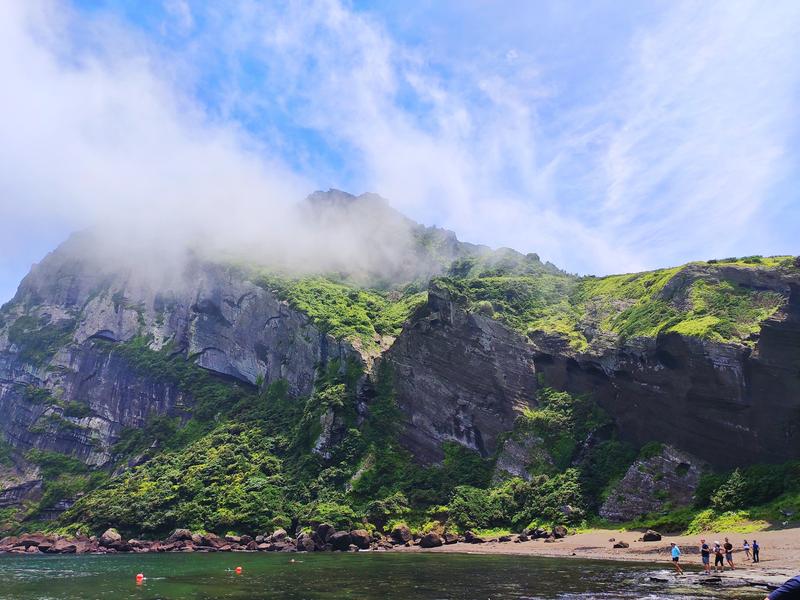Jeju Island
The jewel in the archipelago around South Korea’s southern coast is Jeju Island (often referred to as Jejudo). There are volcanic crags to explore, innumerable palm-fringed beaches and lush paddy fields interspersed with tangerine groves. For walkers, the Jeju Olle Trail winds across the island in a series of short, accessible hikes, and there are several remote areas which are easily reached for those wishing to escape the high-season crowds. Scale a caldera, marvel at the caves and lava tubes, admire the waterfalls, take in the fields of tricolour cosmos flowers, or just lie back and enjoy the sun.
Three things to do in Jeju Island
Obviously there's a lot more, this is just to get you started...
Volcanic peaks & hidden valleys
Rising 1,950 metres above Jeju’s green hills, the shield volcano of Hallasan is the highest point in South Korea. The volcano takes on a different identity with the changes of the seasons, covered in pink azalea in spring and crisp, white snow in winter. Four hiking trails lead hardy climbers towards its peak, where you can sit amongst the clouds… In the east of the island are the tranquil delights of the rural retreat of Seongsan, which is dramatically shadowed by the green caldera of Ilchulbong, or ‘Sunrise Peak’, and ancient statues made of volcanic rock, known as hareubang, crop up all over the island

Windswept shorelines & real-life mermaids
Jeju’s second city of Seogwipo nestles in a laid-back landscape of waterfalls and tangerine farms. It’s just a stone’s throw from the beautiful sands of Jungmun, complete with exclusive resorts and Pacific rollers crashing dramatically against the shore. In the windy southwest stands the magnificent rock-cut temple of Sangbanggulsa, hewn out of the peak of a mountain, where you can enjoy panoramic views over the rugged coastline of Yongmeori. Mere mortals may not be able to swim safely in many of Jeju’s powerful waves, but the island’s unique haenyeo can. Affectionately referred to as the Jeju Mermaids, these female free-divers plunge into treacherous waters without scuba gear in search of shellfish and sea urchins, though this tradition is in danger of being lost.

A seaside metropolis…
When the island’s inevitable rains come lashing down, and beach time is off the cards, The vibrant but relaxed Jeju City, where more than half of the island’s population are resident, comes into its own. Jeju City is remarkably low-rise, emphasising the dramatic outline of Hallasan’s extinct volcanic cone towering above it. Its streets are full of fascinating museums, such as the immersive Arte Museum, the culturally rich Folklore and Natural History Museum, and the rather risque Loveland erotic sculpture park. Foodies can find themselves in paradise, feasting on oysters and abalone stone pot, barbequed black pork with kimchi and pickled radish, or sashimi and ribbon fish in some of the city’s many fine eateries, or relaxing with cups of sweet tangerine tea.


